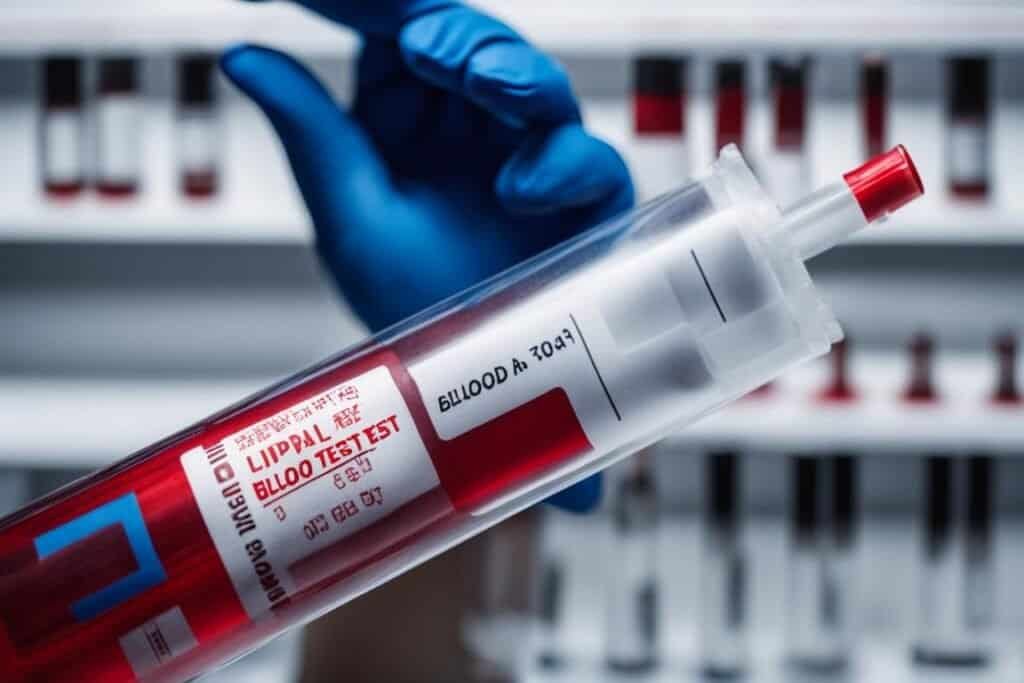Welcome to the first section of our article, where we will dive into the fascinating world of cholesterol and lipoproteins. These terms may sound complex, but they play a crucial role in our overall health and well-being. By understanding the basics of cholesterol and lipoproteins, you can take control of your cholesterol levels and make informed decisions about your health.
Cholesterol, a vital component of our bodies, is necessary for the normal functioning of cells. It is important to note that not all cholesterol is bad. In fact, we have different types of cholesterol, including LDL (low-density lipoprotein) cholesterol, often referred to as “bad” cholesterol, and HDL (high-density lipoprotein) cholesterol, known as “good” cholesterol. The levels of these cholesterol types in our blood can impact our health.
Lipoproteins, on the other hand, are responsible for transporting cholesterol and triglycerides in our bloodstream. From chylomicrons to VLDL, IDL, LDL, and HDL, each lipoprotein has its distinct characteristics and functions. Monitoring our cholesterol levels and managing them according to guidelines is essential for our well-being.
Key Takeaways:
- Cholesterol is an essential component of our bodies and necessary for cell functioning.
- There are different types of cholesterol, including LDL (bad) and HDL (good) cholesterol.
- Lipoproteins play a vital role in transporting cholesterol and triglycerides in our bloodstream.
- Monitoring cholesterol levels and following guidelines is crucial for managing our health.
- Understanding the basics of cholesterol and lipoproteins empowers us to make informed decisions about our health.
The Relationship Between Cholesterol, Lipoproteins, and Cardiovascular Disease
High levels of lipids, including cholesterol and triglycerides, in the blood can increase the risk of cardiovascular disease. LDL cholesterol, also known as “bad cholesterol,” can contribute to the development of atherosclerosis, which is the buildup of fatty deposits in the blood vessels. This condition can lead to heart attacks, strokes, and other serious cardiovascular problems. Lowering LDL cholesterol levels is a common approach for reducing the risk of these diseases.
Hyperlipidemia, or high levels of lipids in the blood, is often managed through dietary changes, exercise, and medication. By adopting a heart-healthy diet that is low in saturated and trans fats, and high in fruits, vegetables, and whole grains, you can help lower your cholesterol levels. Regular physical activity, such as walking or swimming, can also have a positive impact on cholesterol levels and overall cardiovascular health.
Medications, such as statins, fibrates, and bile acid sequestrants, may be prescribed by your healthcare provider to further control your cholesterol levels. It is important to take these medications as directed and follow up with your healthcare provider for regular check-ups and blood tests to monitor your cholesterol levels and assess your cardiovascular risk.
By managing hyperlipidemia effectively, you can significantly reduce your risk of developing cardiovascular disease and its associated complications. Remember, small changes in your lifestyle, combined with appropriate medical intervention, can make a significant impact on your long-term cardiovascular health.
Types of Lipoproteins and Their Functions
In the previous section, we discussed the basics of cholesterol and lipoproteins and their role in the body. Now, let’s delve deeper into the different types of lipoproteins and their specific functions.
There are five main types of lipoproteins: HDL cholesterol, LDL cholesterol, VLDL cholesterol, IDL, and chylomicrons. Each lipoprotein performs a unique role in transporting lipids and plays a crucial part in maintaining our overall health.
HDL Cholesterol – The Good Cholesterol:
High-Density Lipoprotein (HDL) cholesterol is often referred to as the “good cholesterol” due to its protective effects against cardiovascular disease. HDL cholesterol carries excess cholesterol from peripheral tissues back to the liver, where it can be excreted from the body. By doing so, HDL cholesterol helps reduce the risk of plaque formation in the arteries, promoting heart health.
LDL Cholesterol – The Bad Cholesterol:
Low-Density Lipoprotein (LDL) cholesterol, on the other hand, is commonly known as the “bad cholesterol” because it can contribute to the development of atherosclerosis. LDL cholesterol transports cholesterol to various tissues, including the arteries, where it can accumulate and form plaque. Over time, this plaque buildup can narrow the arteries, leading to cardiovascular problems.
VLDL Cholesterol – Triglyceride Transporter:
Very-Low-Density Lipoprotein (VLDL) cholesterol primarily carries triglycerides from the liver to other tissues in the body. Triglycerides are a type of fat that serves as a source of energy. VLDL cholesterol plays a crucial role in delivering triglycerides to cells, where they can be used for various metabolic processes.
IDL – Intermediate Lipoprotein:
Intermediate-Density Lipoprotein (IDL) is a lipoprotein that is derived from VLDL cholesterol. It can either be removed by the liver or further converted into LDL cholesterol. IDL cholesterol levels can serve as an indicator of overall lipid metabolism, providing insights into an individual’s cardiovascular health.
Chylomicrons – Triglyceride Transporters:
Chylomicrons are large lipoprotein particles that are responsible for transporting dietary triglycerides from the intestines to various tissues throughout the body. These triglycerides are utilized as a source of energy or stored in adipose tissue for later use.
Lipoprotein (a) – Increased Risk of Atherosclerosis:
Lipoprotein (a), also known as LP(a), is a variant of LDL cholesterol that is associated with an increased risk of developing atherosclerosis. High levels of LP(a) in the blood can contribute to the formation of plaque in the arteries, increasing the risk of cardiovascular disease.
To better understand the functions of these lipoproteins, refer to the table below:

Lipid Panel Blood Test and Lipoprotein (a) Testing
A lipid panel blood test is a common diagnostic tool used to measure various components of your blood, including total cholesterol, HDL cholesterol, LDL cholesterol, and triglycerides. This comprehensive test provides valuable information about your lipid profile and plays a crucial role in assessing your cardiovascular risk.
The lipid panel blood test is typically ordered by healthcare providers to evaluate your cholesterol levels and identify any abnormalities that may require intervention. It is an essential part of cholesterol testing and management.
During the test, a small sample of your blood will be drawn and sent to a laboratory for analysis. The results will provide detailed information about your cholesterol levels, helping your healthcare provider determine if any further action is necessary to maintain optimal heart health.
In addition to measuring total cholesterol, HDL, LDL, and triglycerides, your healthcare provider may also order a lipoprotein (a) test if there are specific risk factors for heart disease. Lipoprotein (a) is a specific type of LDL cholesterol that is associated with an increased risk of cardiovascular problems.
Lipoprotein (a) testing is not a routine part of cholesterol screening. It is typically only ordered if you have a personal or family history of heart disease, unusually high LDL cholesterol levels, or risk factors for familial hypercholesterolemia.
When preparing for a lipid panel blood test, it is important to follow any fasting instructions provided by your healthcare provider. Fasting before the test helps ensure the accuracy of the results, especially for measurements such as triglycerides.

Regular cholesterol testing through lipid panel blood tests is an important part of managing your cardiovascular health. It allows you and your healthcare provider to monitor your cholesterol levels, identify any potential issues, and make informed decisions regarding your treatment plan.
| Component | Desired Range | High Risk Range |
|---|---|---|
| Total Cholesterol | Less than 200 mg/dL | 240 mg/dL or higher |
| HDL Cholesterol | Greater than 40 mg/dL (men) Greater than 50 mg/dL (women) | Less than 40 mg/dL (men) Less than 50 mg/dL (women) |
| LDL Cholesterol | Less than 100 mg/dL | 160 mg/dL or higher |
| Triglycerides | Less than 150 mg/dL | 500 mg/dL or higher |
Remember, healthy cholesterol levels are crucial for maintaining optimal heart health. If you have any concerns or questions about cholesterol testing or managing your lipid profile, consult with your healthcare provider for personalized guidance.
Conclusion
Understanding the basics of cholesterol and lipoprotein is crucial for effectively managing your lipid levels and promoting a healthier lifestyle. High levels of LDL cholesterol and other lipids in your bloodstream can significantly increase your risk of cardiovascular disease. To mitigate this risk, it’s important to take proactive steps to manage your cholesterol levels.
Regular lipid screenings are essential for monitoring your cholesterol and lipoprotein levels and assessing your cardiovascular risk. By working closely with your healthcare provider, you can interpret your lipid test results and develop a personalized plan for managing your cholesterol. Lifestyle changes play a significant role in lipid management. Adopting a heart-healthy diet, engaging in regular physical activity, and maintaining a healthy weight can all contribute to better cholesterol control.
In some cases, lifestyle changes may not be sufficient, and medication may be required to help lower your cholesterol levels. Your healthcare provider can guide you in determining the most appropriate cholesterol treatment options for your specific situation. By combining lifestyle modifications and medication, you can effectively manage your cholesterol and reduce the risk of heart disease.
Take charge of your lipid health by staying proactive and working closely with your healthcare provider. By prioritizing cholesterol management through lifestyle changes, medication, and regular lipid screenings, you can significantly reduce your cardiovascular risk and improve your overall well-being.

